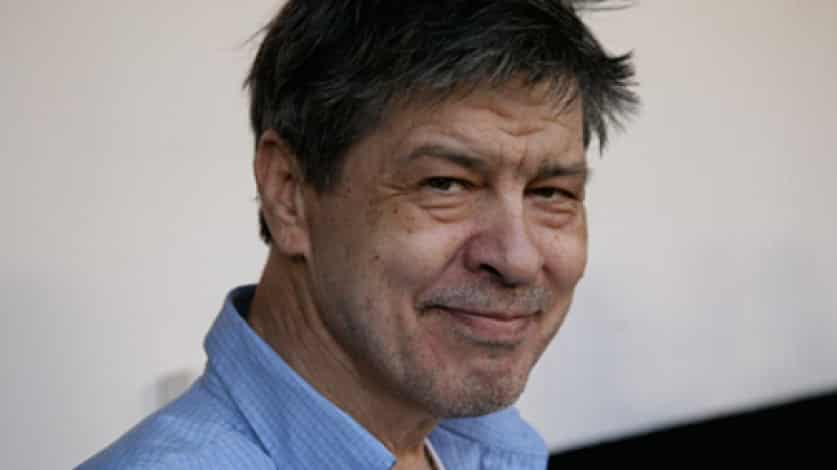It has been only lately that I have felt confident enough to call myself a writer. I thought you had to make a small fortune before something became your “career.” Well I have been writing, much longer than I taught or even did talk radio. Of all these three I actually made a little more with my keyboard than in the classroom, or on the air.
I am not certain which of these gave me more joy and personal satisfaction. In my own humble opinion I have been very good at all three. But writing seems much more consistent with what I have always wanted to do. Auguste Rodin’s The Thinker has always been my personal symbol.
A replica sits in my study, just a few feet from me as I bang away. If I have received one constant criticism in my life, it is that I think too much. Ever since I encountered the late Dr. Albert Burke’s TV show A Way of Thinking in 1960, I have wanted to be a thinker, that is to have high and glorious thoughts about life, love, happiness and affairs strictly of the mind, heart and the spirit.
If one wants to become a writer he must do two things that will prepare him to be a good writer and not just a hack. Just read books, lots of books, as my stammering graduate professor at St. Louis University so succinctly and necessarily declared. It was wisdom for the ages, a veritable truism.
The other thing is to try to develop what the memoirists call your “voice.” I think another, perhaps even more accurate term, would be your “style.” Find the mode of expression that best suits your way of thinking and living.
I realized just recently that there have been five notable influences on the development of my style. Two of them were peripheral. My English teacher, in my last year at Xavier High School, was Father John Jones, a quiet, almost shy older man who got me hooked on the judicious use of the metaphor. We had studied Macbeth that year and I wrote some of the goriest and most blood-dripping images that still make me cringe when I think about them.
Then there was Professor John Willson at St. Louis University, who taught Intellectual History. He used to reward his students with the salutation, “Good Point,” when someone asked an incisive question during my first semester. I asked him dozens of questions in my two classes. Not one scored and crossed the goal line.
He taught me that we should write with a Hemingwayesque economy of verbiage, a rule I often find very difficult to follow. He also complained that I mixed way too many metaphors. In the second semester, a Lincoln seminar, I did my paper on the 16th President’s Historical Perspective. Three years later it was published in the Lincoln Quarterly and 44 years later, remains as my sole academic publication. I wrote one sentence that Dr. Willson said contained a mixed metaphor.
That line read Lincoln was… not some paladin on the chessboard of history. I think he found paladin to be incorrect in my metaphor until I reminded him that a paladin was the knight. The professor looked up, smiled and said those magic words to me. Good Point! Game, set and match! I had just scored the winning touchdown and crashed a late inning home run, all in one sentence.
I had learned that from an eponymous TV show starring Richard Boone. It was about a drifter, named Paladin, dressed in black, who broke all the stereotypical images of heroes in the fifties. He righted wrongs and saved damsels as much as Roy Rogers or Gene Autry did. On his black leather holster was a silver paladin, the figure of a knight.
There have been three major influences in my writing life. The first, Bishop Fulton J. Sheen, whose many books from his Life is Worth Living series to his Go to Heaven and It takes Three to get Married touched my soul in a mystical way that unleashed the pure energy and imaginative wisdom of the Catholic faith.
The second one was Joseph Sobran, who wrote beautiful cogent essays that challenged the movers and shakers of our cultural decline in a profound way. He fought this elite in Hollywood, business and politics using words and language as a rapier and not a bludgeon. No other Catholic writer has ever approached his insight or wit since G. K. Chesterton. He was an early defender of life and exposed those within our very numbers who would lead the lambs of faith astray in defiance of their Creator.
And finally, there was Pat Conroy, who to me was the best living writer in America until his death in March of 2016 from pancreatic cancer. He gave my philosophical underpinnings the perfect lyrical touch that gave wings to my words and made them soar with eagles, rather than dance with turkeys on earth.
Conroy’s books, both fiction and non-fiction solidified a perfect lyrical marriage with my love of the unmixed metaphor, so that I will never appear to be a mere parrot of Sobran’s beautifully and succinctly written prose. Of course there is so much more I can say about these three Catholic writers and thinkers but I must save them for another day.






Keep writing, Bill!!!?✝️??